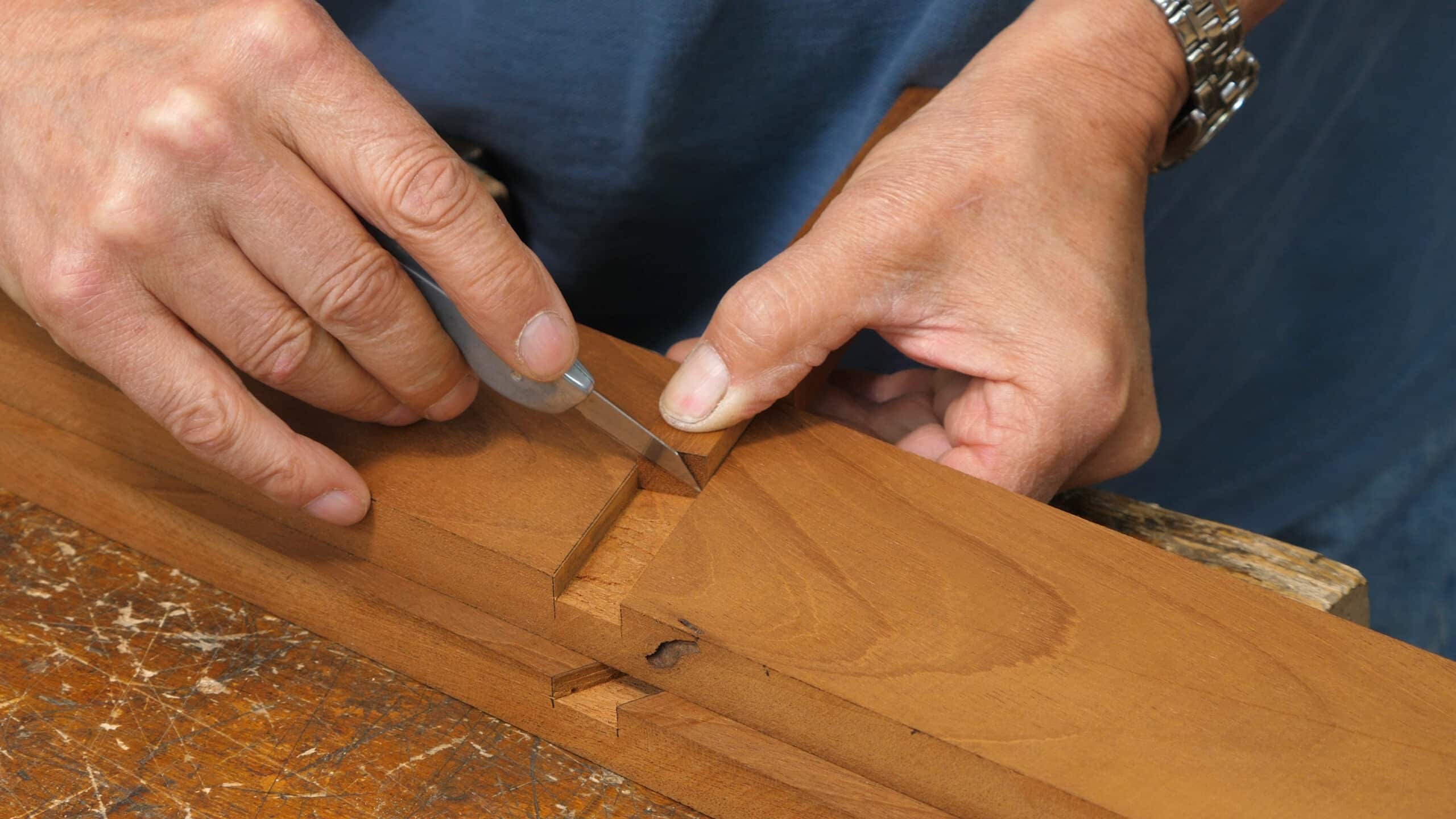Stepladder: Episode 2
Posted 13 September 2017
This is an episode in a paid series. Want to watch it? You just need to sign up as a paid member, and you can enjoy this video and many other videos we think you will love.
With the locations of the housing dadoes established, they can be marked and cut, with care being payed to the angled aspects. Once they have been cut, the mortises can be laid out and cut.


I much prefer the approach in this video to showing the repeated activities in regular time, but edited to focus on key details – for example, at the end of this video showing the mortise chop techniques are demonstrated again and again in close up for emphasis. This repetition reinforces the techniques demonstrated in the initial presentation. Much better than speeding up the video to whisk us through the tasks. Great educational content here that gets better with each new video. Thanks!
I agree with Peter on his comments, thank you team for the change.
Just one question if i may? Regarding the mortises, is there a reason why they are only done on the top and bottom step, and would it matter if they were on all the steps, as from an aesthetics point of view i prefer that?
Many thanks,
Andy
Hello Andrew,
You can indeed mortise them all if you like. It just isn’t necessary for strength.
Best, Phil
Too much work for no benefit.
You might say a complete row of mortice buttons would have its aesthetic, on the other hand there’s the minimalism of doing what’s needed, but not more.
Good evening,
What is the wood used for this project, Paul said it 3/4 times but I didn’t understand well (I am French), and I didn’t find any name with similar phonetic on google
Best regards
The wood he is using is mahogany. He is using it because he salvaged it from an old piece of furniture. He mentioned other woods could be used even pine. Hope this helps.
It’s called “acajou” in french 🙂
Watching Paul’s carving out the mortise reminds me what wood carver Mary May said–woodcarvers have to be ambidextrous.
I know if I were in school I would get smacked for questioning the master but, When Paul is making the knife wall on the rail for the top of the tread, should we be doing this on the waste side instead of putting the bruising on the work piece. Just referring to the instruction on some of the earlier projects. Or does it make a difference at this point?
Hi Sandy,
I think it is more critical here to maintain the same angle for a parallel housing dado. Sometimes it is not convenient to have the square/sliding bevel on the good side as far as hand and tool positioning are concerned. Paul sometimes compensates by only going lightly with the knife or moving the square/sliding bevel a minute amount away from the line so the knife doesn’t cut at as much of an angle and there is less bruising.
Does that clarify things?
The remark about wanting to make wood pyramids had me laughing, so funny yet so true. Cant wait to get home and get started. 🙂
Paul. On the housing dado, why not create a sloped block that would guide the chis l similar to what you use for cutting the Mortice on a mortice and tennon.
That would give you a straight line across the top and bottom of the dado and allow you to cut the sides at the proper angle. Simple to make the tool out of an off cut or a 2×4 and plane the angle just off of square to the angle set on the gauge you already have.
Do you mean a block with the correct angle on the edge that you can clamp to the edge of the housing dado? You could certainly try, making sure that it is a wood that is resistant to wear due to the number of mortises.